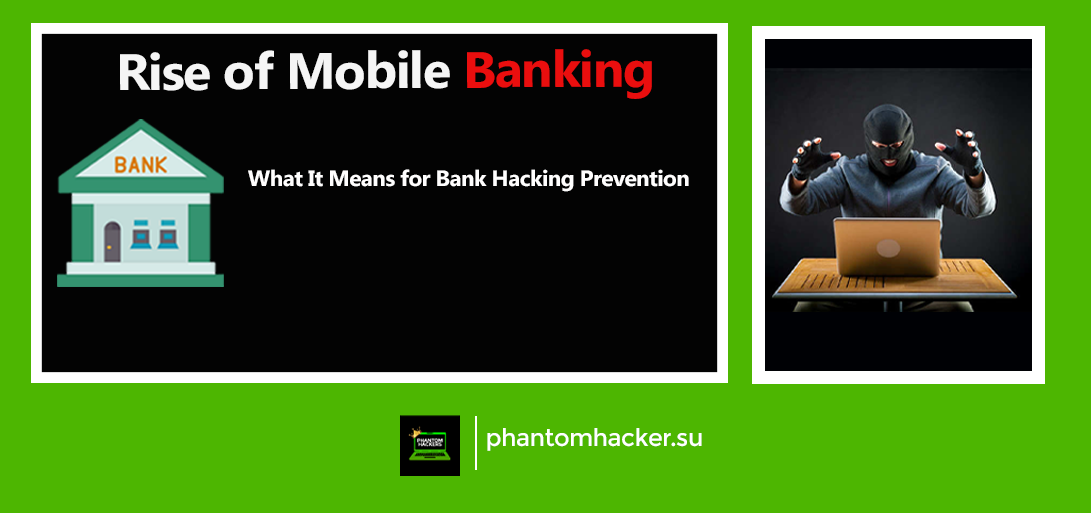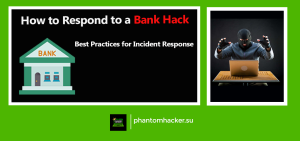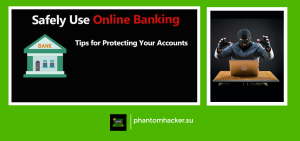In recent years, the use of mobile banking has become increasingly popular among consumers worldwide. With the convenience of accessing your bank account anytime, anywhere, it’s no wonder that mobile banking has seen a surge in demand. However, with the rise of mobile banking comes the concern of bank hacking prevention. As more users rely on their mobile devices for banking, banks must take extra measures to ensure their customers’ safety and prevent any potential security breaches. In this article, we will discuss the rise of mobile banking, the potential risks of bank hacking, and what banks are doing to prevent such attacks.
The Growth of Mobile Banking
The rise of mobile banking has been staggering in recent years, with more and more people turning to their smartphones and tablets for banking needs. According to Statista, there were 1.2 billion mobile banking users worldwide in 2020, a figure projected to reach 1.7 billion by 2024. The convenience of mobile banking has made it a preferred choice for customers, with transactions such as bill payments, fund transfers, and account inquiries accessible at their fingertips.
The Risks of Bank Hacking
As mobile banking continues to grow, so does the concern of bank hacking. Bank hacking is a type of cybercrime where criminals use digital methods to access bank accounts and steal money. With mobile banking, customers are at risk of phishing attacks, malware, and other cyber threats that can compromise their accounts. Hackers can use tactics such as fake mobile banking apps or text messages to deceive users into giving away their account details. The rise of mobile banking has given hackers more opportunities to exploit vulnerabilities and gain access to sensitive information.
Preventative Measures Against Bank Hacking
To combat bank hacking, banks must take preventive measures to ensure their customers’ safety. Banks have implemented various measures such as two-factor authentication, encryption, and biometric identification to enhance security. Two-factor authentication requires users to provide two forms of identification, such as a password and a fingerprint or facial recognition. Encryption is the process of converting sensitive data into code, making it difficult for hackers to decipher. Biometric identification, such as facial recognition or fingerprint scanning, uses unique physical features to verify a user’s identity. These measures work together to enhance the security of mobile banking and prevent unauthorized access.
Importance of Customer Education
While banks take necessary measures to prevent bank hacking, customer education is also crucial in ensuring the safety of mobile banking. Banks must educate their customers on the importance of strong passwords, avoiding phishing scams, and other security measures they can take to protect their accounts. Customers must be vigilant and cautious when using their mobile banking apps, ensuring that they are downloading the official app and not falling prey to fake apps or phishing scams. Regularly monitoring account activity and reporting any suspicious activity to their bank is also vital.
Impact of COVID-19 on Mobile Banking
The COVID-19 pandemic has accelerated the growth of mobile banking, with many customers turning to digital channels for their banking needs. According to a report by McKinsey & Company, digital banking engagement increased by 20% globally during the pandemic. As more people work from home and practice social distancing, the convenience of mobile banking has become even more apparent. However, this also means that banks must ensure their digital channels are secure to prevent any potential cyber threats.
Future of Mobile Banking
The future of mobile banking looks promising, with more banks investing in digital channels to meet the growing demand. However, as mobile banking continues to evolve, so will the risks of bank hacking. Banks must continue to innovate and enhance their security measures to stay ahead of cyber threats. Customer education will also play a crucial role in ensuring the safety of mobile banking. As long as banks prioritize security and customer education, mobile banking will continue to be a convenient and safe way for customers to manage their finances.
Conclusion:
The rise of mobile banking has revolutionized the way customers interact with their banks. However, this convenience has also brought forth the concern of bank hacking prevention. Banks must take necessary measures to ensure the safety of their customers, such as two-factor authentication, encryption, and biometric identification. Customer education is also crucial in preventing bank hacking, and customers must be vigilant when using their mobile banking apps. The COVID-19 pandemic has accelerated the growth of mobile banking, and the future looks promising for the industry. As long as banks prioritize security and customer education, mobile banking will continue to be a safe and convenient way for customers to manage their finances.
FAQs
- Is mobile banking safe?
- Yes, mobile banking is generally safe, but there are some risks involved, such as the potential for bank hacking and fraud. Customers can take steps to protect themselves by using strong passwords and avoiding public Wi-Fi networks.
- What are some best practices for mobile banking?
- Best practices for mobile banking include using strong passwords, avoiding public Wi-Fi networks, and only downloading apps from trusted sources.
- What should I do if I suspect fraud on my mobile banking account?
- If you suspect fraud on your mobile banking account, you should contact your bank immediately and report the issue.
- Can mobile banking be used for business accounts?
- Yes, mobile banking can be used for both personal and business accounts. Many banks offer mobile banking services specifically designed for business customers.
- What should I do if I lose my mobile device with my banking information on it?
- If you lose your mobile device with your banking information on it, you should contact your bank immediately and report the issue. Most banks offer the ability to remotely wipe your device to protect your personal information.






